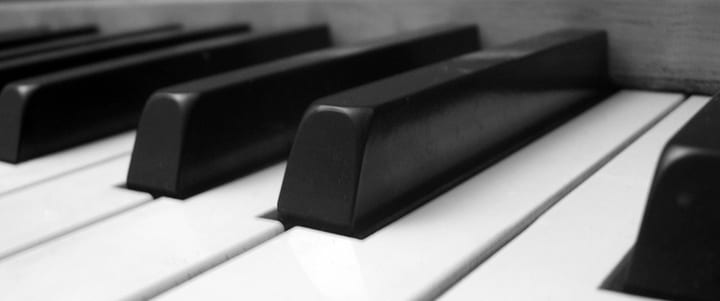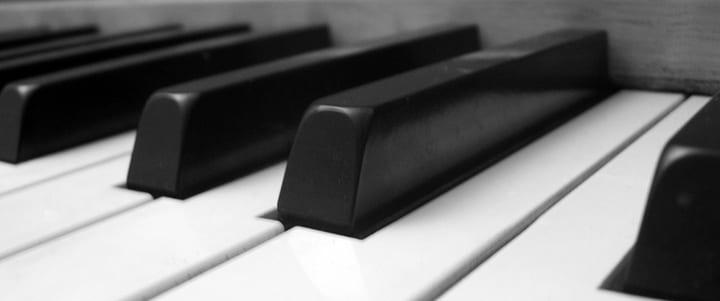 As a beginning piano student, it’s important to gain an early understanding of many things in order to play the instrument as well as you possibly can. One of those early components is learning how to read keys on the piano in sheet music, and understanding the difference between major and minor.
As a beginning piano student, it’s important to gain an early understanding of many things in order to play the instrument as well as you possibly can. One of those early components is learning how to read keys on the piano in sheet music, and understanding the difference between major and minor.
Understanding Key Signatures
The key signature is marked at the beginning of every piece of music, immediately to the right of the grand staff (the treble and bass clefs on any composition). Key signatures include sharps and flats, and let you know in which key the music is to be played. The sharps or flats dictate which keys on the piano you’ll be using, as well as whether the piece is in a major or minor key.
So, how do you tell the difference? As you train your musical ear, over time most students can instantly tell if a piece is major or minor. Songs written in major keys tend to sound happy, bright, and upbeat. Minor keys often sound mysterious, sad, hauntingly beautiful, or even ominous. For example, most music used at Halloween or in horror movies tends to be written in minor keys.
Your private piano teacher can guide you through training your ear, as there are many exercises that can help.
Looking at Keys on the Piano
When you first glance at the keys on the piano, you’ll notice the black keys are in patterns of 2s and 3s. The closest distance between two keys is called a half-step, for example, from C to the closest black key to its right (C sharp, which could also be D flat, depending upon the key signature) is a half step. If you go to the next white key to the right of C, that is D, and that distance is called a whole step.
If you abbreviate whole steps as “WS” and half-steps as “HS” – using the key of C Major for simplicity’s sake, since it has no sharps or flats – this is the pattern of a major scale:
WS WS HS WS WS WS HS
C – D D – E E – F F – G G – A A – B B – C
A scale is made up of 8 notes, from one C to the next, or D to the next and so on. For major scales, the pattern is always the same as listed above, so you can now begin on any one of the keys on the piano you like, and build a scale, using that simple WS and HS pattern as your guide.
Your piano teacher will likely give you exercises to play using the keys on the piano to create scales, as well as other technique and finger-strengthening drills. Your teacher may also teach you the basics of music theory, such as the order of the flats and sharps in the key signatures.
Minor keys have a different pattern of whole steps and half-steps on the keys on the piano. Your teacher can give you a more in-depth explanation when he or she feels you are ready to tackle playing scales in the various keys. As a beginner, you’re doing great if you can understand the difference between whole steps and half steps, and how those are arranged to play a basic major scale.
Where Do I Go From Here?
Try listening to music in a different way from now on, to train your ear to recognize major or minor compositions. Whether you listen to classical symphonies or your favorite jazz, blues, pop, folk, or rock music, one thing is true of all styles: they will all either be written in a major or minor key. Remember, the bright, happy-sounding music indicates a major key; sadder or more mysterious-sounding pieces will tell you it’s in a minor key. Some pieces switch back and forth from major to minor – your ear will learn to tell the difference sooner than you may think!
Congratulations on deciding to learn piano, and for working closely with your teacher to help you gain the best understanding and playing ability possible. Keep playing, ask good questions, and have lots of fun – music is a great adventure and meant to be enjoyed!
Photo by chloester
Megan L.

